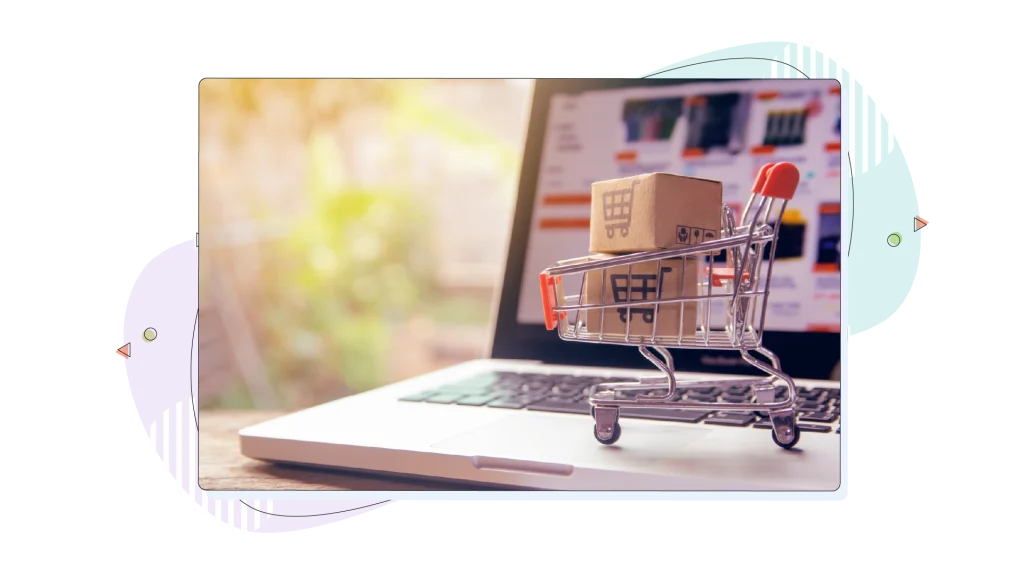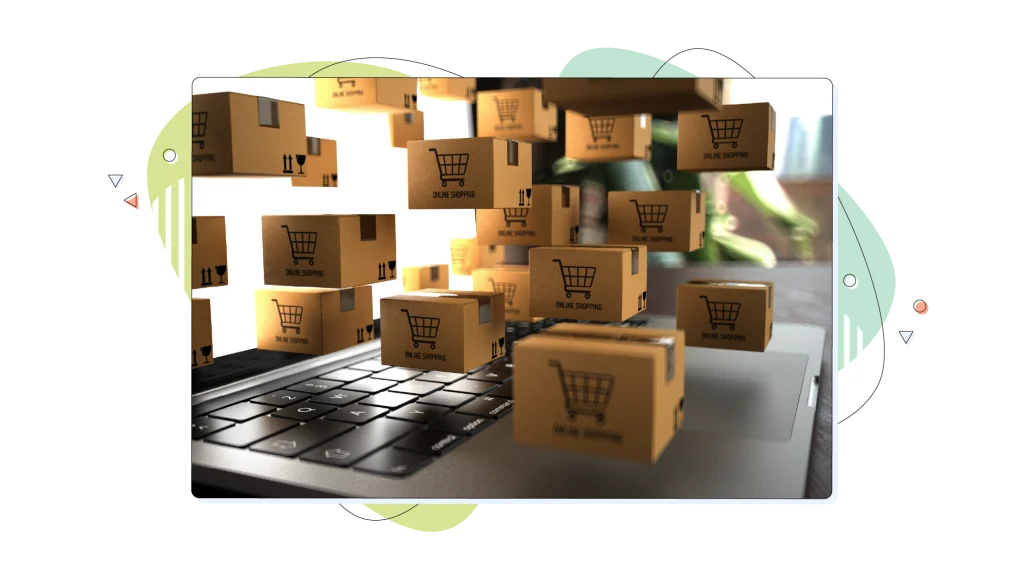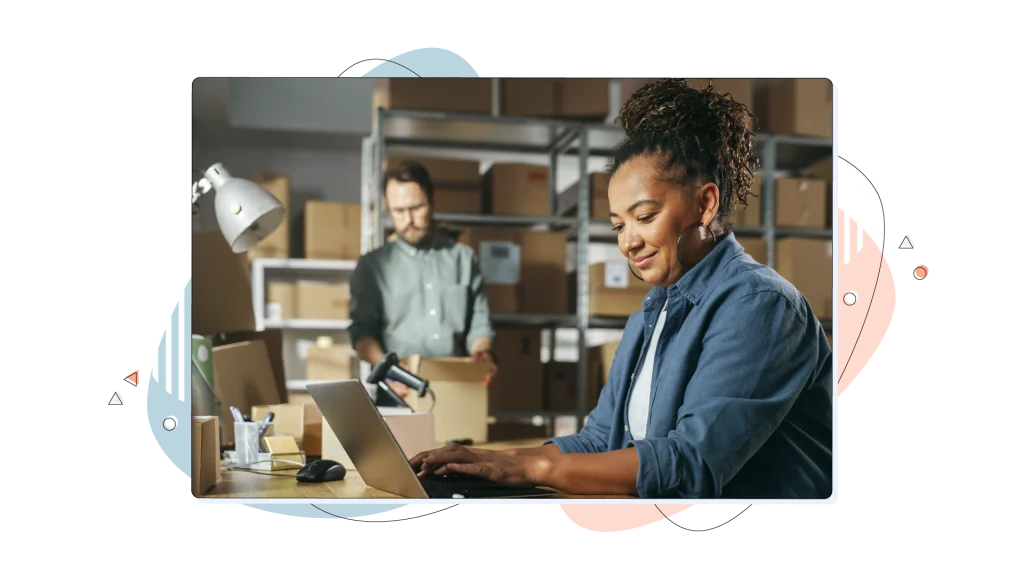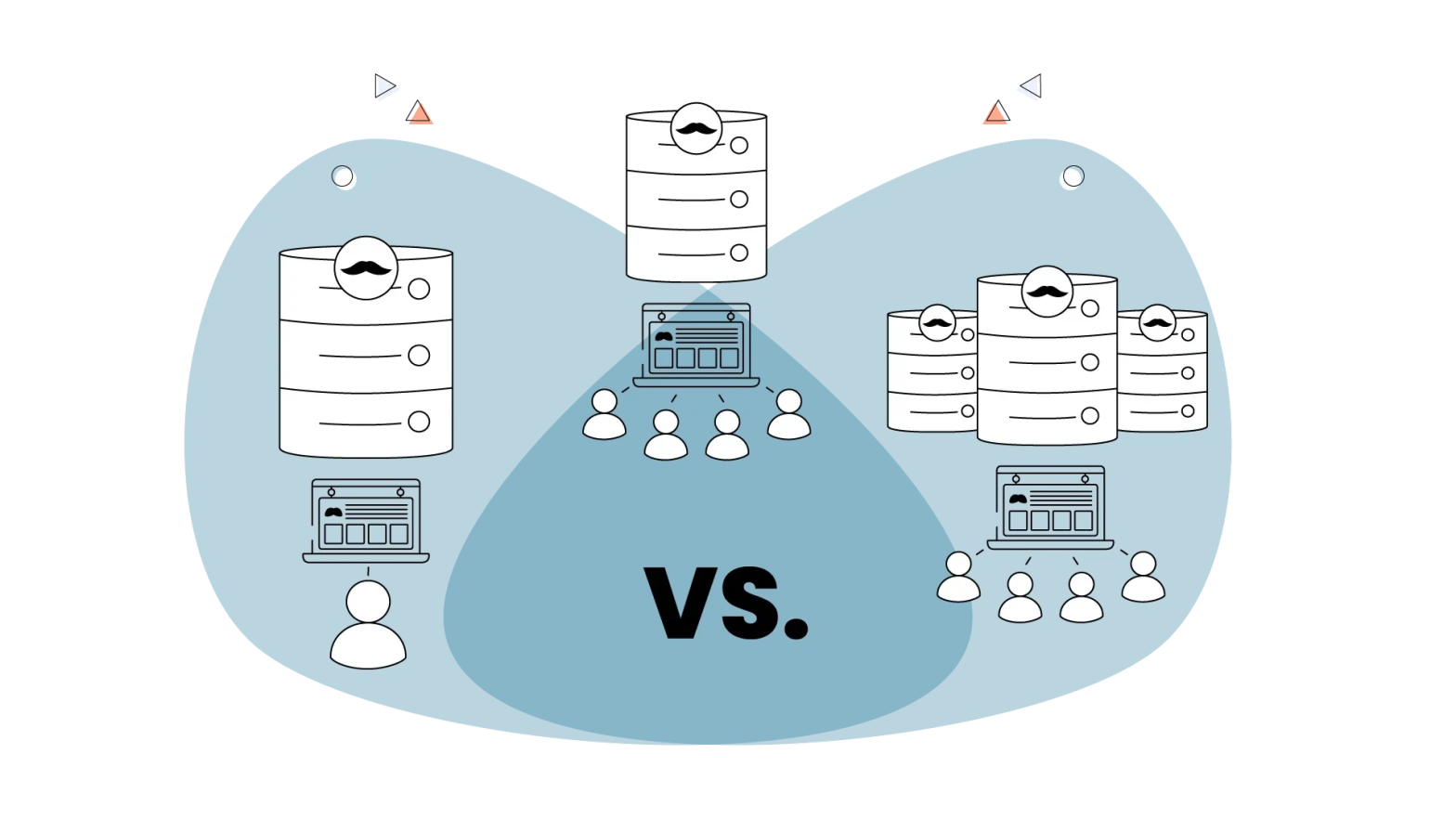Ever found yourself clicking “add to cart“ late at night, thinking what wonder the future of online shopping holds?
Maybe you’ve marvelled at how eerily accurate those product recommendations have become, or perhaps you’ve wished you could truly “see“ if that new couch would fit in your living room before hitting the buy button.
And this rapid evolution isn’t slowing down. This blog will focus on navigating the exciting terrain of the eCommerce industry in 2025 and beyond and delve into the key trends that are poised to redefine how we buy and sell online.
- eCommerce Market Overview: First, The Numbers
- Top eCommerce Trends of 2025
- eCommerce Sales & Growth: Breaking Records &Boundaries
- B2B eCommerce & eCommerce Platforms
- Customer Satisfaction Is Key to a Competitive Edge
- Logistics & Supply Chain
- Sustainability & Social Responsibility

eCommerce Market Overview: First, The Numbers
The statistics regarding eCommerce paint a picture that’s nothing short of astonishing.
Global online sales have been growing exponentially, contributing dramatically to the overall revenue increase. With revenue increasing by billions of dollars each year, eCommerce is influenced by significant trends that are occurring.
A Global Marketplace in Hyperdrive
Experts predict that by 2029, the market size is anticipated to surpass 5.89 trillion USD. That’s more than the GDP of powerful economies like Germany and India. This growth is driven by the increasing engagement of global consumers who are embracing online shopping at unprecedented rates.
The global eCommerce market is expected to grow at a compound annual growth rate (CAGR) of over 8% between 2025 and 2029.
LATAM: The Sleeping Giant Awakens
While many business owners focus their digital strategies on traditional markets, something remarkable is happening across Latin America.
Revenue growth in the region’s eCommerce market is projected to reach 168 billion USD in 2025.
What’s driving this explosive growth? The story is fundamentally human: a growing middle class with increasing disposable income is embracing online retail with open arms.
Forward-thinking eCommerce platforms, including Mercado Libre and Amazon Mexico/Brazil, have already recognized this shift, expanding their presence throughout Latin America to meet the surging demand.
The Philippines’ eCommerce Market Is the Fastest Growing in the World
Sometimes, revolution comes from unexpected places. The Philippines has emerged as the undisputed growth champion in the global eCommerce landscape, with market size skyrocketing by an incredible 33.65 billion USD in 2030 alone. eCommerce retailers in the Philippines are capitalizing on this growth by expanding their digital presence and improving their logistics capabilities.
Ready to build your own eCommerce store? Get started easily with HostPapa’s Website Builder, which gives you access to many professional eCommerce features, 45+ payment gateways, inventory tracking, and the ability to sell on social media!

Top eCommerce Trends of 2025
1. The AI Revolution: Smarter Shopping for Everyone
Remember the days of generic product recommendations that seemed completely out of touch? Thankfully, those days are fading fast.
Artificial intelligence (AI) is rapidly transforming eCommerce, moving far beyond simple suggestions to create deeply personalized shopping journeys for each online shopper. Research indicates that a remarkable 72% of consumers are more likely to remain loyal to a brand that offers tailored experiences.
It’s even predicted that generative AI will account for a significant portion of all product data created. One example supporting this statement is Target, an eCommerce store that’s generating 1,000 product descriptions per week with 98% accuracy on the first attempt with tools such as Describely.
Beyond just recommendations, AI is also revolutionizing customer service in eCommerce. AI-powered chatbots are becoming increasingly sophisticated, providing instant support and improving overall customer satisfaction.
- AI is transforming the online shopping experience by streamlining decision-making, providing predictive analytics, and automating processes.
- Conversational AI technologies, such as chatbots, can offer instant front-line customer support.
- Machine learning models can work in the background to analyze purchasing patterns to forecast demand and predict inventory needs.
- AI can reduce call center agent labour costs by $80 billion USD by 2026, according to industry predictions.
2. AR & VR: Bringing the Showroom to Your Living Room
Ever wished you could see how that new pair of sneakers would look on your feet without actually trying them on? Or perhaps visualize a new sofa in your living room before committing to the purchase?
Augmented Reality (AR) and Virtual Reality (VR) are making these wishes a… well, a reality. They’re bridging the gap between the physical and digital shopping worlds.
AR allows customers to design the room of their dreams online, making it a key trend in 2025. AR also helps lift conversions and sales by up to 40%, according to real-world examples mentioned by Gunner Kennels, a company dedicated to producing heavy-duty kennels that ensure pets are safe during transportation.
3. The Reign of Social Commerce
Are you more likely to discover your next favourite product while scrolling through your social media feed than by actively searching on a retailer’s website? You’re not alone.
Projections indicate that global social commerce revenues are expected to surpass the staggering $6.2 trillion USD by 2030.
Social media platforms are evolving into integral shopping channels, driven by the sheer convenience they offer and the powerful influence of social connections.
Consumers are spending increasing amounts of time on these platforms, and the integration of shopping features creates a seamless buying experience, capitalizing on impulse purchases and the impact of social trends.
Influencer marketing and live shopping are playing a significant role in this trend. It’s predicted that influencer marketing, particularly through whitelisting styles, will be a major driving force in 2025 and beyond.
4. M-Commerce Mania: We’re All Shopping on Our Phones Now
When was the last time you made an online purchase on a desktop computer? For many, the answer might be “a while ago.”
Mobile commerce, or m-commerce, continues its relentless growth, solidifying the importance of a mobile-first approach for all online businesses. This shift towards mobile commerce is substantially contributing to the growth of global eCommerce sales.
It is estimated that mobile commerce will account for 59% of all retail eCommerce sales, totalling over $4 trillion USD by 2025 and beyond.
5. Personalization is now Expected
Remember when personalization in eCommerce meant simply seeing your name in an email?
Today, personalization involves tailoring every single step of the shopping journey based on individual customer data. And it plays a big role. 72% of consumers are more likely to be loyal to a brand that offers a personalized customer experience.
Generic, one-size-fits-all approaches are becoming increasingly ineffective as consumers have come to expect and even demand tailored experiences.
Effective personalization relies heavily on the collection and analysis of customer data, including both first-party data (information directly provided by the customer) and zero-party data (information explicitly and proactively shared by the customer).
6. Going Green: Sustainability as a Core eCommerce Value
Being eco-friendly is a growing perk, particularly in businesses that deal with physical goods.
Today’s consumers aren’t just hoping businesses will make sustainable choices—they’re demanding it. A remarkable 78% of shoppers now factor environmental impact into their purchasing decisions, with over half willing to pay a premium for products that align with their values.
This shift is especially pronounced among Gen Z and Millennial shoppers, who collectively represent the largest buying power in today’s digital marketplace.
Beyond the Packaging
The most innovative eCommerce brands recognize that sustainability extends far beyond biodegradable packaging (though that’s certainly important!). True environmental responsibility encompasses the entire product lifecycle:
- Ethical sourcing: Transparent supply chains that prioritize fair labour practices and sustainable resource management.
- Energy-efficient operations: Powering warehouses and data centers with renewable energy.
- Green logistics: Carbon-neutral shipping options and optimized delivery routes.
- Circular economy initiatives: Buy-back programs, refurbishment services, and product designs that minimize waste.
- Digital sustainability: Even optimizing website efficiency to reduce the carbon footprint of online browsing.

eCommerce Sales & Growth: Breaking Records &Boundaries
Ever wonder just how massive the digital shopping landscape has become? Hold onto your virtual shopping carts because the numbers are staggering. Global eCommerce spending shattered all previous records now, surpassing an eye-watering $6.8 trillion USD.
eCommerce Subscription Market Grows Despite Economic Pressure
Despite inflation concerns and economic uncertainties, the subscription economy continues to thrive in unexpected ways. By the close of 2024, global subscription eCommerce claimed a whopping 278 billion USD—a figure that continues to climb. What’s driving this persistent growth? The answer is the convenience and the regular buying habits of most consumers.
People want to save as much as possible on shipping costs, and sometimes subscription-based marketplaces like Amazon Prime or other local options can be beneficial. That’s especially true for users who frequently utilize them for themselves or their relatives.

B2B eCommerce & eCommerce Platforms
The B2B eCommerce landscape now bears little resemblance to its predecessor from just a few years ago.
Three powerful forces are reshaping this terrain: emerging technologies, rapidly shifting buyer preferences, and an insatiable demand for enhanced customer experiences.
- Hyper-personalization: Nearly 70% of B2B buyers now expect vendors to understand their company’s unique needs and challenges before the first conversation. Generic catalogues and one-size-fits-all pricing are becoming obsolete.
- Seamless omnichannel experiences: Your customers want to start their research on mobile, continue on desktop, and perhaps finalize the purchase through a conversation with a sales rep—all while maintaining a consistent experience across touchpoints.
- Self-service capabilities: 83% of B2B buyers prefer self-service tools for reordering and account management rather than contacting a representative.
- Blockchain-secured transactions: As transactions grow larger and more complex, blockchain technology is emerging as the gold standard for secure, transparent B2B commerce.

Customer Satisfaction Is Key to a Competitive Edge
In the crowded digital marketplace of today, what truly separates the thriving eCommerce businesses from the struggling ones? Is it price? Selection? Shipping speed? While all these factors matter, the data points to something more fundamental: customer satisfaction has emerged as the ultimate competitive differentiator.
Consider this: Acquiring a new customer costs approximately five times more than retaining an existing one. Yet a mere 5% increase in customer retention can boost profits by 25% to 95%.
In an era where consumers can switch brands with a single click, satisfaction isn’t just a nice-to-have—it’s the bedrock of sustainable business growth.
Logistics & Supply Chain
Remember when “fast shipping” meant getting your package within a week? Collaborating with logistics partners is crucial for streamlining inventory management and ensuring timely deliveries.
Now, consumers tap their feet impatiently if delivery takes more than 48 hours. The logistics landscape of today has been completely reimagined, with speed and convenience becoming the new currency of customer satisfaction.
The most innovative eCommerce brands have moved beyond centralized warehousing to embrace distributed fulfillment networks. Think of it as having dozens of mini-warehouses strategically positioned across regions rather than one massive distribution center. This approach has slashed average delivery times significantly.
Global Lead Time for Production Materials
While consumers enjoy ever-faster deliveries behind the scenes, the global supply chain continues its complex dance of materials sourcing and production. The average lead time for production materials has undergone a massive transformation since the supply chain disruptions of the early 2020s.
Smart eCommerce businesses have learned painful lessons about just-in-time inventory management. The new paradigm embraces strategic redundancy—maintaining relationships with multiple suppliers across different geographic regions to mitigate risk.
Shipping Rates Saw a Notable Increase
If there’s one cloud in the otherwise sunny logistics landscape, it’s the reality of shipping costs.
Global shipping rates have seen an increase due to supply chain disruptions and a few other reasons. What’s driving these increases? A perfect storm of factors:
- Fuel costs continue to fluctuate unpredictably.
- Labour shortages in key logistics roles.
- Increased regulatory compliance expenses.
- Investments in sustainable shipping technologies.
- Last-mile delivery innovations that prioritize speed.
How are savvy eCommerce brands responding? Rather than simply passing all these costs to consumers, market leaders are finding creative solutions:
- Shipping memberships: Following the Amazon Prime model, more brands are offering subscription-based shipping programs that build loyalty while offsetting delivery costs.
- Batch ordering incentives: Encouraging customers to consolidate purchases with tiered discounts based on order size.
- Flexible delivery options: Providing consumers with choices that balance speed and cost, from premium same-day delivery to more economical options.
- Micro-fulfillment partnerships: Smaller brands are sharing warehouse space and delivery resources to achieve economies of scale previously available only to larger players.

Sustainability & Social Responsibility
The gap between sustainable marketing and sustainable action has closed dramatically, with consumers demanding—and verifying—real environmental commitment from the companies they buy from.
The numbers tell a compelling story: 34% of consumers now consider environmental impact when making purchasing decisions.
Sustainable packaging has seen particularly dramatic innovation. The days of excessive plastic wrap and styrofoam peanuts are fading fast, replaced by materials that are not just recyclable but actively beneficial to the environment.
Mushroom-based packaging that composts in your garden, seaweed-derived alternatives that dissolve in water, and paper products embedded with seeds that grow into plants—these aren’t futuristic concepts anymore; they’re shipping realities for forward-thinking brands.
Conclusion
As we progress through this year and the years to come, one thing has become very clear: The pace of change in eCommerce isn’t just holding its breakneck speed—it’s accelerating even more.
The digital marketplace continues to evolve in ways that challenge our assumptions and expand our possibilities. So, how do forward-thinking businesses stay ahead of this perpetually moving curve?
The answer does not lie in chasing every emerging trend but in fostering organizational agility, which enables you to identify, evaluate, and implement the innovations that are most important to your unique business model and customer base.
FREQUENTLY ASKED QUESTIONS
How is AI changing the way we shop online?
AI is revolutionizing online shopping by providing smarter product recommendations, enhancing customer service through AI-powered chatbots, offering predictive analytics for better inventory management and marketing, and personalizing the entire shopping experience based on individual preferences and behaviours. By 2025, AI is even expected to generate a significant portion of product data.
What is social commerce, and why is it important?
Social commerce is the practice of buying and selling products directly on social media platforms. It’s becoming increasingly important as consumers spend more time on social media and appreciate the convenience of discovering and purchasing products without leaving their favourite app. Platforms like TikTok, Instagram, and Facebook are becoming significant sales channels driven by influencer marketing and live shopping.
Why is mobile commerce so dominant?
Mobile commerce (m-commerce) is dominant due to the increasing use of smartphones globally, offering unparalleled convenience for browsing and purchasing products anytime, anywhere. Mobile apps often provide a better user experience and higher conversion rates compared to mobile websites.
What is omnichannel eCommerce?
Omnichannel eCommerce refers to a unified and seamless brand experience across all online and offline channels. This means customers can interact with a business through various touchpoints, such as online stores, physical stores, mobile apps, and social media, with a consistent and integrated experience.
Is SEO still important for eCommerce businesses?
Yes, Search Engine Optimization (SEO) remains a critical element for eCommerce success. Ensuring that an online store is easily discoverable through organic search is essential for attracting potential customers.




